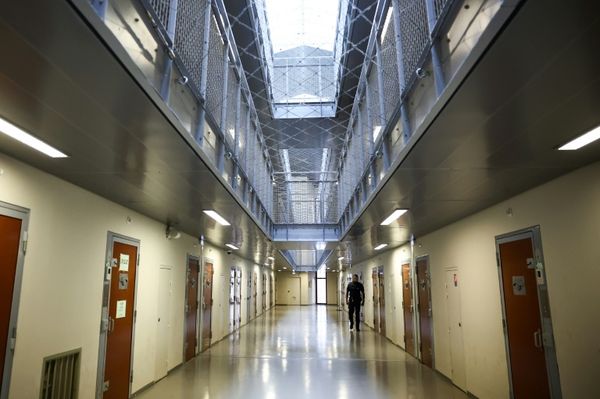
A BBC documentary into the sexual predation of Mohamed Al Fayed, owner of Harrods from 1985 to 2010, found more than 20 women who testified to abuse by Fayed and five who were raped by him. Since the programme was aired last Thursday, lawyers representing the victims have said there are probably many more out there.
That seems highly likely. As the former UK editor of Vanity Fair responsible for defending a libel case brought by Fayed in the mid-90s, I know of three who couldn’t be included in the documentary and the anecdotal evidence from that period suggested that Fayed treated Harrods as a mini fiefdom where he had the right over any female employee he spotted on CCTV or met walking the floors of the department store. His abuse and the fear he instilled were open secrets.
He never suffered the consequences of his crimes, the scale of which is mapped by the BBC film Al Fayed: Predator at Harrods and puts him on a level with Jeffrey Epstein and Harvey Weinstein. While they ended up in jail, Fayed died peacefully, aged 94, in London last year, untroubled by the law or any remorse, his fortune still intact.
That says much about the power he wielded as the Harrods boss, about the period in the UK before the #MeToo awakening, and the teams of publicists, lawyers, security guards, HR bosses and even doctors who smoothed his way and cleaned up after him, allowing the assaults and rapes to continue well into this century. Fayed did not prey upon and terrorise more than 20 young women without a lot of support.
So much evidence was available and yet he was only seriously questioned once about sex abuse, after a teenage assistant at Harrods complained to the police of an assault in his office. At the time, she was 15 and he was nearly 80. The story was leaked by the police to the press (many police officers and journalists benefited from the distribution of Harrods hampers at Christmas time) and that placed the girl and her family under great pressure. Charges were dropped because she was confused about the day the attack took place. Why this one tiny error was a basis for not pursuing an assault on a minor in a workplace is anyone’s guess, but it smells bad.
That episode rings bells with me. From 1995 to 1997, I and the lawyer David Hooper, of Biddle & Co, investigated Fayed, who had sued Vanity Fair and our reporter Maureen Orth over a profile that alleged he was a serial abuser and a racist, and that he spied on his staff, bugging their phones and using hidden cameras.
Hooper and I are not professional investigators, so it’s significant that by the summer of 1997 we had gathered enough evidence in those three areas, particularly on the sex abuse, to be confident of a good outcome at trial. Fayed was, indeed, an out-and-out racist – in one instance, reported by his former security head John Loftus, asking about a respected Harrods cleaner, “What’s a fucking Black woman who is too fat to clean doing here?”
He used ex-policemen to plant bugs in the homes and on the phones of his targets: we had a list of some 45 individuals whose phones were bugged, including Fayed’s deputy chairman Christoph Bettermann. And Fayed used CCTV to spot likely victims on the floors of Harrods and to snoop on his closest colleagues. According to the ex-military policeman Bob Loftus, who was once on the inside of this creepy operation, he watched a well-known member of his staff who was having an affair with his secretary and showed the video around.
The evidence came thick and fast, but along the way we had to contend with skulduggery and threats dreamed up by Fayed’s security force of ex-policemen. We were constantly worried about our witnesses and, unusually in a libel case, were compelled to write to Fayed’s lawyers on 21 May 1997 that “pressure is being put on witnesses not to testify in a fashion which we will not tolerate and which we reserve the right to draw to the attention of the trial judge”. There were telephoned threats and visits from ex-cops that warned young women they’d never work again, and much worse. There were attempts to fit Hooper and me up with criminal charges. This was all standard for Fayed, which explains why so many of the women in the BBC documentary are still, one year after his death, nervous of speaking and why they required such sensitivity by the BBC director Erica Gornall and producer Cassie Cornish-Trestrail to draw out their stories. It is impossible to watch the film without seeing the lasting pain of their experiences.
As with Weinstein, Fayed’s sex attacks were gross, inept in their crudeness and very frightening. In 2022, I was contacted by a middle-aged British-born woman who had made a successful life in the US but was still haunted, three decades later, by the abuse and sadism she experienced at the hands of the Fayed family. In 1996 I learned of a case of a young US woman being interviewed as a designer for Fayed who had been briefly held prisoner and propositioned with an act so revolting that she couldn’t bring herself to swear an affidavit. However, we learned that a cease and desist letter had been sent to Fayed by a well-connected relation, and we were able to request it in discovery, which meant he knew that we knew all about that appalling incident.
The humiliation of others was the thing that drove Fayed, whether it was Tory MPs whom he bribed to ask parliamentary questions on his behalf then gleefully exposed, the senior managers of his businesses who were sacked and had their reputations trashed by Fayed’s PR operation or the society beauty who had happened to float into his orbit and was mortified for life by the disgusting nature of his demand. To him, the humiliation of another person was confirmation of his own power, a point dismayingly missed in Peter Morgan’s Netflix series The Crown, where a serial rapist in a silk dressing gown who demanded his victims call him “Papa” was rendered an affable and harmless rogue.
By the summer of 1997, Fayed began to make moves to settle the case, principally in the person of Michael Cole, the ex-BBC journalist, so important in his defence in repeated scandals. A meeting between Cole and the then chief executive of Condé Nast UK, Sir Nicholas Coleridge, took place in a Turkish bath. Wearing only towels, they discussed terms without the risk of being bugged. No agreement was reached, but Cole felt able to declare in a letter in late June: “You already have my confirmation of Mr Fayed’s willingness to see matters moved on … Blessed are the peacemakers, as I hope you would agree.”
As the journalist responsible for gathering evidence, I did not.
At that time, our investigation was focused on the doctors used by Fayed to test the sexual health of young, white, female Harrods employees who were told that they were being given a medical at the company’s expense. The “medical” included invasive examinations, which they weren’t warned about, and the deeply private reports were sent straight to Fayed. Those employees he suspected of being gay were told they must have an Aids test, the results of which were sent to him.
At least five West End doctors were involved in these medically questionable examinations. Three were women, one of whom has moved to Australia and has, surprisingly, set up a women’s health and wellbeing clinic that specialises in the menopause. All of them refused to help with the case, although their examinations could, in effect, be seen as a precursor to sexual abuse by Fayed. I felt very strongly that their work for Fayed and refusal to contribute evidence should be exposed in open court. That was one reason I wanted to continue. The other was Diana, Princess of Wales, who had a developing relationship with Fayed’s son Dodi.
Our concern was that if we settled, the evidence about his abuse and surveillance would never be available to her. So it was vital that she understood that all Fayed’s properties were wired for audio and video, and that she could never be sure of having a private conversation on his premises, let alone being able to undress without being watched. Through intermediaries, we made our fears known. Diana’s friend Rosa Monckton and her husband Dominic Lawson also repeatedly warned Diana. I have no idea whether she paid attention.
By the end of July 1997, no agreement was reached. The holidays were upon us and things were closing down, but on 4 August we learned that George Carman, the celebrated QC of the time who was acting for Fayed, had blanched when reading our re-re-amended defence, which included the evidence of security head Bob Loftus and Fayed’s former secretary. The judge delayed the trial by a year – to autumn 1998 – and commented that even without the latest 800 pages of evidence: “you would win this case if you proved only 75% of what you already have.” He described the new allegations as “very serious, including conspiracy to commit several serious offences. It is a matter of public interest.”
That had been my line in a four-page memo to my bosses in New York when I listed the main findings of our investigation, some involving serious criminality. But the crucial point, which I made less well, was that we owed so much to the seven women who had agreed to testify, arguably a bigger step then than the one taken by the women who appeared in the BBC’s documentary, although that, too, required extraordinary courage. In his prime, Fayed was a remorseless enemy to anyone who crossed him, and our witnesses had good reason to be fearful.
Everything was swept away by the death of Diana and Dodi in Paris on 31 August. Si Newhouse, the owner of Condé Nast, decided to shut down the case immediately out of respect for the grieving father. Both sides absorbed their own costs, no damages were paid, and we agreed to place all evidence in locked storage. It seemed the right and humane decision in the immediate aftermath of the shocking deaths. But it wasn’t, because of the countless women who have suffered since our case was settled, including many who were raped by a man who appeared unaffected by grief or regret. I argued we should act like a publication, not a business, and write another story revealing what we had discovered, but there was understandably no appetite to return to the subject of Mohamed Al Fayed. In one respect, I didn’t go along with the settlement. All the boxes of evidence in my possession in September 1997 were placed in a secure setting, one that I controlled. Much of the material was generated by me and was my copyright.
I have since allowed it to be consulted by journalists, including the makers of this important documentary that finally, after 27 years, nails Mohamed Al Fayed and gives his victims the voice they deserve.







